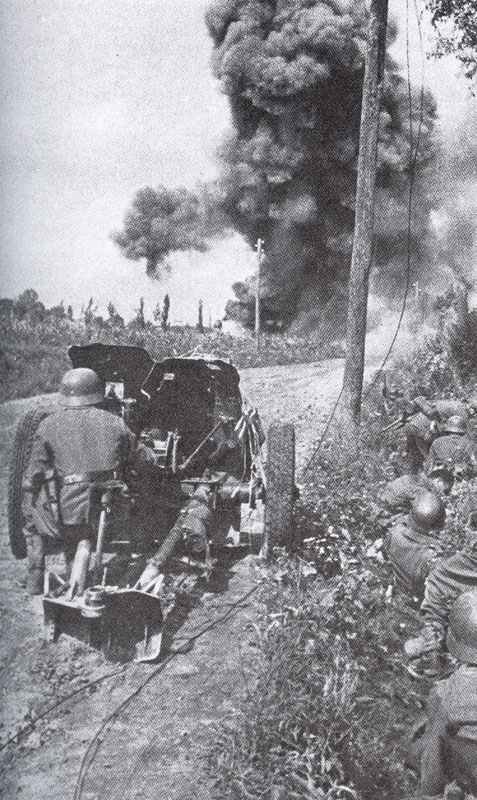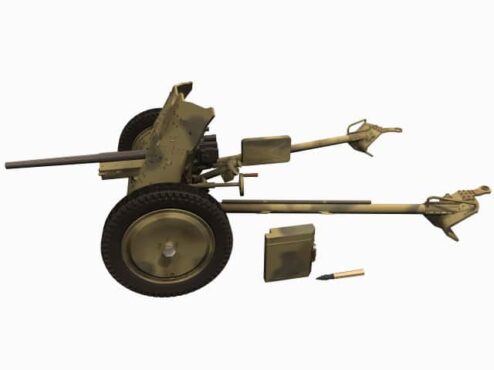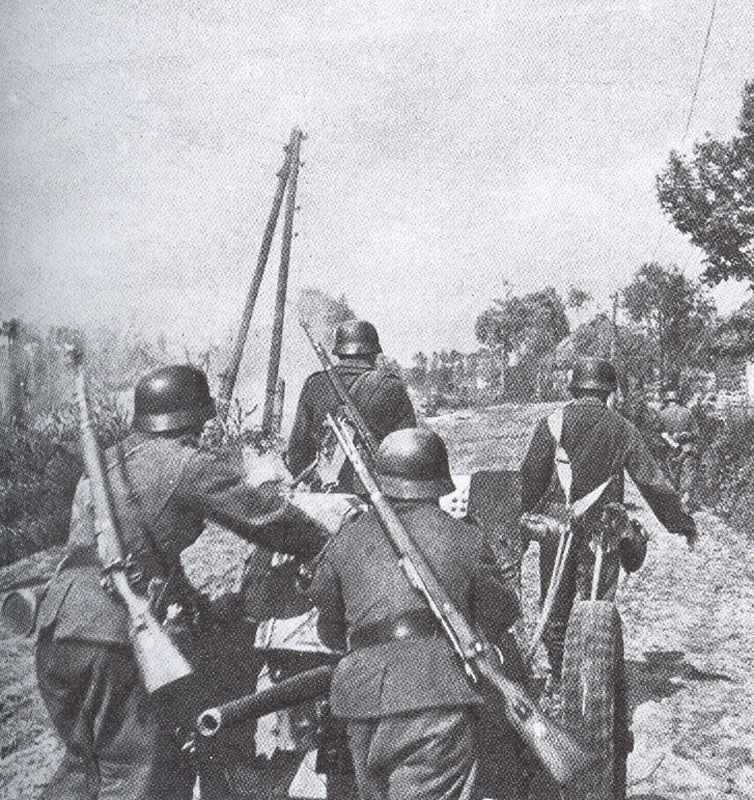German light anti-tank gun 37-mm PAK 36.
History, development, service, specifications, pictures and 3d model.
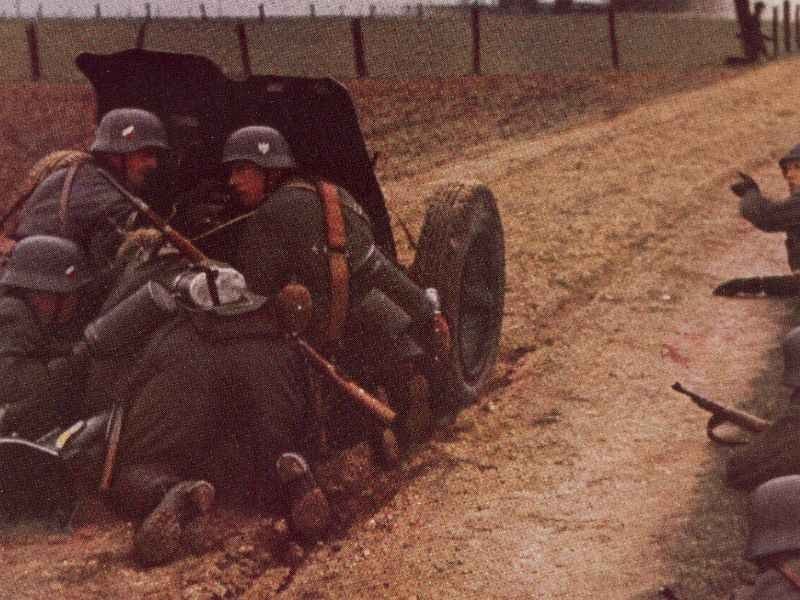
3.7 cm PAK 36
Type: Anti-tank gun (Panzerabwehrkanone, German).
History:
Table of Contents
The 3.7 cm PAK 36 was the standard German anti-tank gun at the outbreak of war. It was more or less on equal terms with its contemporaries and capable of dealing with most of the tanks of its day. It had been developed in the early 1930s by the Rheinmetal Company of Düsseldorf and the first issues were made in 1936. A number were sent to Spain to be used in the Civil War and several were sold to Russia.
The design of two-wheeled split-trail carriage was efficient and highly maneuverable, and the basic layout was widely copied in other countries, notably in the USA and Japan. Its penetrative performance could have been better, but it was sufficient and it was more than compensated for by its mobility.
After 1940 it was outmatched by the improvements in armor and tank guns and it was replaced by the 5cm PAK 38.
In an attempt to turn them into something useful large numbers were scrapped and their carriages used for other and newer guns. But according to one German source there were several thousands of these weapons built, and large numbers were retained in service; in the hope of providing them with a suitable anti-tank performance the ‘Stick Bomb’ or Stielgranate 41 was introduced.
This was a large hollow charge bomb of 19lbs weight mounted on a stick, with a perforated tail boom carrying fins. The stick was loaded into the muzzle so that the tail boom and fins surrounded the gun barrel. A special blank cartridge was then loaded and used to fire the stick bomb to a maximum range of 800 meters. Due to its low velocity the normal engagement range was restricted to 300 meters, and the massive hollow charge could penetrate 180 mm of armor.
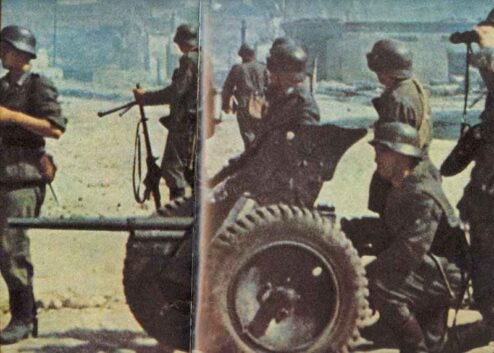
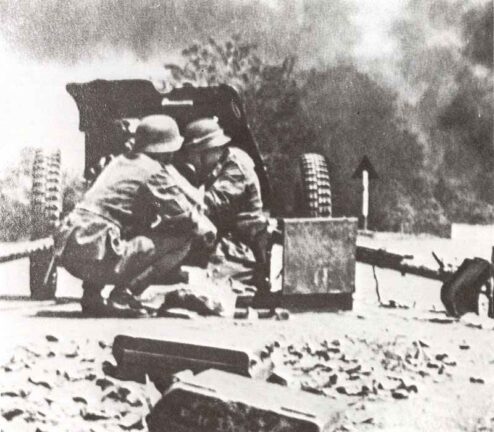
It is believed that large numbers of these were used with good effect against Soviet tanks, and certainly some were used against British and American armor in Normandy in 1944; where the close country favored the short range of this weapon.
The normal ammunition was of two types; a steel AP shell with a small explosive charge which detonated after penetration, and a tungsten cored shot.
Animated 3D model of German 3.7cm PAK 36
Specifications 3.7 cm PAK 36
Specifications:
3.7cm PAK 36 | Specification |
|---|---|
Type | light anti-tank gun |
Crew | 2 |
Length | 5 ft 5.5 in |
Weight | travelling 970 lb, action 723 lb |
Calibre | 37 mm (1.46 in) |
Length of barrel | 65.5 in |
Length of rifling | 4 ft 8.8 in |
Elevation | -5° to +25° |
Traverse | 30° right and left |
Muzzle velocity | AP 2,500 ft/sec; APCR 3,375 ft/sec |
Maximum range | 4,400 yds |
Shell weight | AP 1.5 lb; APCR 12.5 oz; HE 1.33lb |
Penetration mm at 30° armour plates:
Range | Penetration |
|---|---|
100 yds | APCR 65 mm |
500 yds | AP 36 mm; APCR 40 mm |
Service statistics:
3.7cm PAK 36 | figures |
|---|---|
Production | from 1936 until 1940 |
Price per unit | RM 5,730 = c. $ 2,579 = c. £ 546 |
Total production figure | several thousands (no exact data) |
References and literature
Die Geschichte der Artillerie (John Batchelor, Ian Hogg)
Artillery in Colour 1920-1963 (Ian Hogg)
The Encyclopedia of Weapons of World War II (Chris Bishop)
The Encyclopedia of Infantry Weapons of World War II (Ian V.Hogg)
Infanterie im 2. Weltkrieg (J.B.King, John Batchelor)
German Anti-Tank Guns 1935-1945 (Werner Haupt)




